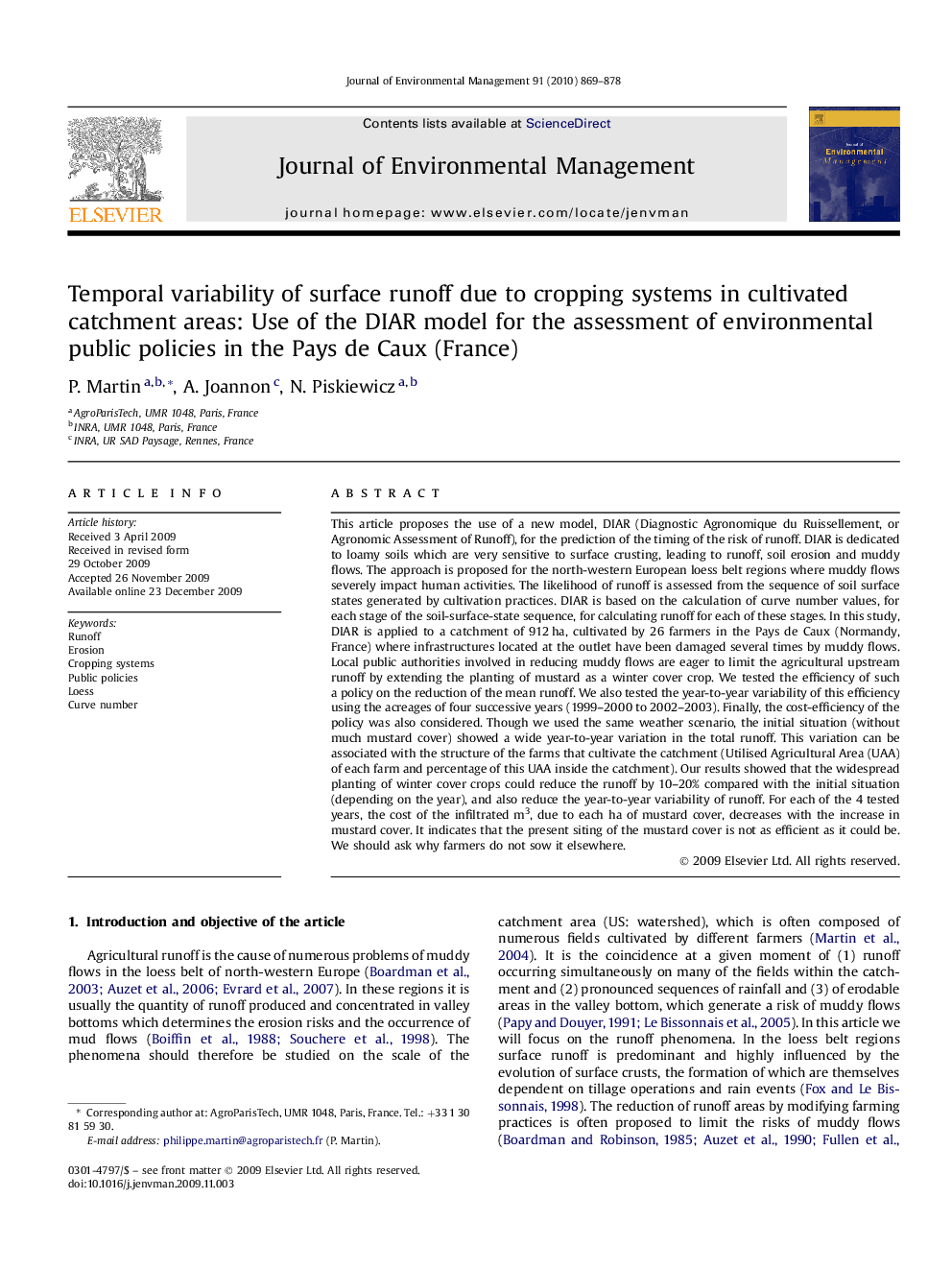| Article ID | Journal | Published Year | Pages | File Type |
|---|---|---|---|---|
| 1057678 | Journal of Environmental Management | 2010 | 10 Pages |
This article proposes the use of a new model, DIAR (Diagnostic Agronomique du Ruissellement, or Agronomic Assessment of Runoff), for the prediction of the timing of the risk of runoff. DIAR is dedicated to loamy soils which are very sensitive to surface crusting, leading to runoff, soil erosion and muddy flows. The approach is proposed for the north-western European loess belt regions where muddy flows severely impact human activities. The likelihood of runoff is assessed from the sequence of soil surface states generated by cultivation practices. DIAR is based on the calculation of curve number values, for each stage of the soil-surface-state sequence, for calculating runoff for each of these stages. In this study, DIAR is applied to a catchment of 912 ha, cultivated by 26 farmers in the Pays de Caux (Normandy, France) where infrastructures located at the outlet have been damaged several times by muddy flows. Local public authorities involved in reducing muddy flows are eager to limit the agricultural upstream runoff by extending the planting of mustard as a winter cover crop. We tested the efficiency of such a policy on the reduction of the mean runoff. We also tested the year-to-year variability of this efficiency using the acreages of four successive years (1999–2000 to 2002–2003). Finally, the cost-efficiency of the policy was also considered. Though we used the same weather scenario, the initial situation (without much mustard cover) showed a wide year-to-year variation in the total runoff. This variation can be associated with the structure of the farms that cultivate the catchment (Utilised Agricultural Area (UAA) of each farm and percentage of this UAA inside the catchment). Our results showed that the widespread planting of winter cover crops could reduce the runoff by 10–20% compared with the initial situation (depending on the year), and also reduce the year-to-year variability of runoff. For each of the 4 tested years, the cost of the infiltrated m3, due to each ha of mustard cover, decreases with the increase in mustard cover. It indicates that the present siting of the mustard cover is not as efficient as it could be. We should ask why farmers do not sow it elsewhere.
